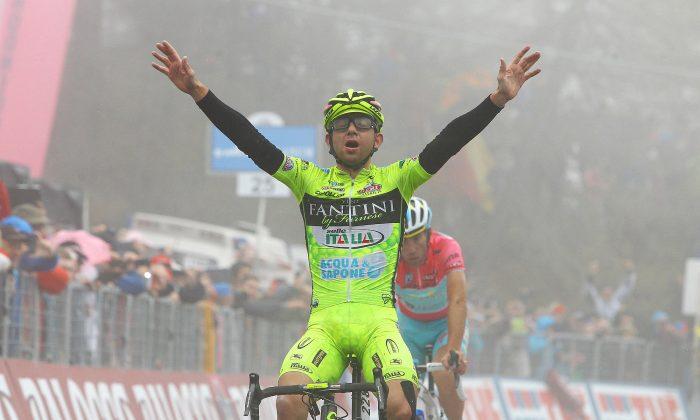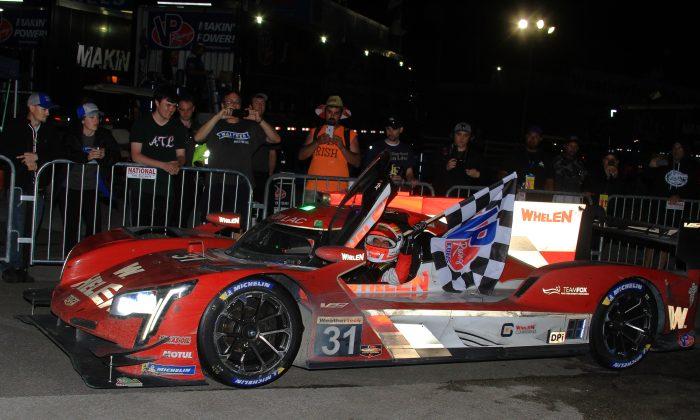Mauro Santambrogio of Vini Fantini beat the peloton up the steep final climb of the revised Stage 14 of the 2013 Giro d’Italia, advancing to fourth in the General Classification.
The 28-year-old Italian rider is only one second behind third-placed Rigoberto Uran of Sky, making a podium finish a very real possibility.
Santambrogio followed race leader Vincenzo Nibali when the race leader attacked on the steep seven-kilometer climb to the finish line, and crossed just ahead of the Cannondale rider, taking 20 seconds time bonus as well as finishing in front of the riders ahead in GC.
The Vini Fantini team leader cut nine seconds of his gap to Nibali, the only rider in the race to shrink that gap.
Nibali made his move on the steep final section of the already steep final climb, where the gradient rose over eleven percent. His earlier attack on the nine percent portion had briefly distanced second-placed Cadel Evans but the BMC rider grinded his way back to Nibali’s wheel.
Evans couldn’t answer the second attack, and came home sixth, 33 seconds after the race leader, losing 45 seconds counting Nibali’s 12 bonus seconds for second place. Evans holds on to second in GC.
Third in the stage was Ag2R’s Carlos Betancur. The Colombian’s efforts earned him ninth in GC.
Blanco’s Robert Gesink, who had been fourth overall and looking good for a possible podium finish, lost four minutes on the stage and is out of the running.
Weather Forces a New Route
Stage Fourteen originally contained two categorized climbs, the Cat Two Sestriere followed by the summit finish in Bardonecchia.
Snow and extreme cold forced the race organizers to drop the Sestriere climb, riders’ health and safety being paramount.
Canceling the Sestriere climb totally changed the character of the race. Instead of a long slow slog (only 3.8 percent but 38 km long, and up to nine percent in the final five km,) the peloton raced over a few rolling hills before heading uphill to the summit finish in Bardonecchia.
The Sestriere climb would have taken the legs out of some of the support riders and put the General Classification contenders on their own on the final climb. Instead, the GC riders had lots of support up the final climb.
That climb was still steep After 40 km of climbing, the actual final ascent was only 7.25 km long but its average gradient was nine percent. The beginning sloped up at 14 percent, to squelch any early attacks, and the final 750 meters were eleven percent and above.
While a tough enough on its own, this climb would have been much more selective had the field had to drag itself over Sestriere first.
The final climb still created a selection, and possibly more than the original route might have, as Vincenzo Nibali had the legs left to attack in the final kilometers.
The final climb is only 7,25 km but it has an average gradient of 9%! It kicks up with 14% right in the beginning and the last 750 meters don’t drop below 11%.
Stage Fifteen Also Altered
Stage Fifteen, which also would have had a Cat One summit finish up the famous Galibier, will also be rerouted. Col du Mont Cenis and Galibier are snowed in and cannot be safely ridden, so the organizers will have to scramble to find an alternative route which still tests the riders.
Vincenzo Nibali has to be pleased with the two changed stages; those two final climbs, in their original forms, would have been his toughest tests and his rivals’ best chances to take the pink jersey away from him.





